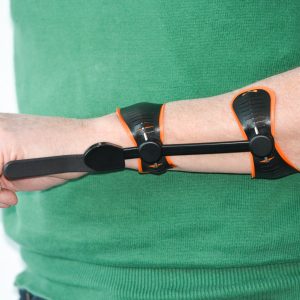All you need to know about Drop Hand Syndrome
Hand function is an integral part of our daily lives. It allows us to perform a wide range of activities with precision and grace. However, there are instances when the muscles that control our hands become weakened, leading to a condition known as Drop Hand. In this blog post, we’ll delve into the main symptoms of Drop Hand and explore effective strategies to ease and manage this condition.
What is Drop Hand?
Drop Hand, also referred to as Radial Nerve Palsy, occurs when the radial nerve, responsible for controlling the muscles that enable us to extend our wrists and fingers, becomes damaged or compressed. As a result, individuals with Drop Hand may experience difficulty extending their wrists and fingers fully. It can lead to a noticeable limp or “dropped” appearance of the hand.
Common Symptoms of Drop Hand
Recognizing the symptoms of a Drop Hand is crucial for early detection and appropriate management. Some of the main symptoms include:
- Wrist and Finger Weakness: Individuals with Drop Hand may find it challenging to extend their wrists and fingers fully. It makes activities such as gripping objects, typing, and holding utensils difficult.
- Loss of Grip Strength: Weakness in the muscles controlling the thumb and fingers can lead to a decreased ability to grasp and hold onto objects securely.
- Difficulty with Fine Movements: Activities that require fine motor skills, like buttoning a shirt or picking up small items, can become troublesome due to the limited mobility of the wrist and fingers.
- Pain and Discomfort: Some individuals may experience pain or discomfort in the forearm or hand due to nerve irritation or muscle imbalances.
Easing Drop Hand Symptoms
While Drop Hand symptoms can be challenging, several strategies and interventions can help ease discomfort and improve hand function:
- Physical Therapy: Working with a skilled physical therapist can help improve muscle strength and coordination. It can also restore the range of motion in the affected hand.
- Orthotic Devices: Customized orthotic devices, such as wrist splints or braces, can provide support to the weakened muscles and help maintain proper hand positioning.
- Nerve Gliding Exercises: Gentle nerve gliding exercises prescribed by a healthcare professional can help prevent nerve adhesions and improve nerve mobility.
- Medications: In some cases, anti-inflammatory medications or pain relievers may be recommended to manage discomfort.
- Lifestyle Modifications: Making adjustments to daily activities, such as using adaptive tools and practising ergonomic techniques, can help minimize strain on the affected hand.
- Surgical Intervention: In severe cases or when conservative treatments aren’t effective, surgical options to decompress or repair the radial nerve may be considered.
Seeking Professional Guidance
If you or a loved one are experiencing symptoms of Drop Hand, it’s important to seek medical attention promptly. A healthcare provider, such as a neurologist or orthopaedic specialist, can accurately diagnose the condition and develop a tailored treatment plan based on individual needs and severity.
In conclusion, Drop Hand symptoms can significantly impact hand function and quality of life. However, with early intervention, appropriate medical care, and consistent efforts, individuals can find relief and regain optimal hand functionality. Remember, seeking professional guidance and staying proactive are key steps toward managing and improving the symptoms of Drop Hand.
Disclaimer: The information provided in this blog post is for informational purposes only and should not be considered medical advice. Please consult with a qualified healthcare professional for accurate diagnosis and treatment recommendations.
-
Amber Orthotics
Amber Wrist Brace
€ 380,00 Select options This product has multiple variants. The options may be chosen on the product page -
Accessories
Amber Wrist Brace Shells
€ 14,99 Select options This product has multiple variants. The options may be chosen on the product page






